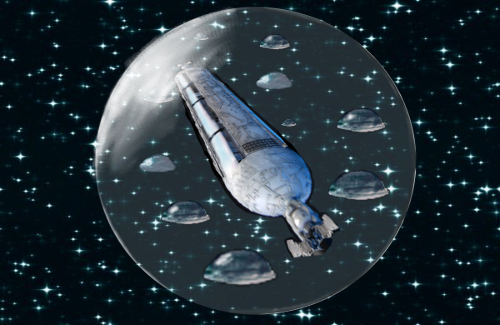WHAT'S THE BEST DESIGN FOR A SPACE COLONY?
/
One day we’ll want a place humans can live beyond Earth. Mars and a number of the moons of the gas giants are prime contenders because they offer lots of space and many of the physical resources we’ll need right there—minerals and important gases locked up in ice or rock. Still, there’s a good chance that our first colonies beyond the atmosphere won’t be anchored to anything big and solid at all. They’ll probably be air-breathing environments floating free in the space between the planets. One of the five Lagrangian points, where the gravity of the Earth and the Moon are in balance, would be a good choice because once placed there, the colony would stay put. It would also be relatively close for purposes of supply, communication and, in the worst case, escape back to Earth.
Though we’ll probably place small-scale habitats in one of those spots to continue learning all we can about space living, I have a feeling that the first real colony of any size outside the Earth will be somewhere else. Like the center of a hollowed-out asteroid.
It just makes sense. We’ll be digging out the asteroid anyway, mining it for metals and anything else we can find. Depending on which rock we pick, it will probably have many of the valuable elements we’d find on a planet without the difficulties caused by planet-scale gravity. Plus man-made hollows inside a metallic rock will have plenty of natural radiation shielding. You can’t overestimate the importance of that outside Earth’s protective magnetic field. There would be drawbacks, though, including the great distance to the asteroids, the complete lack of gravity, and the difficulty of providing good lighting inside a rock.
In his inspirational book from the early 1990’s called The Millennial Project, Marshall T. Savage suggested that the best model for a space colony would be a clear giant bubble with smaller bubbles nested inside. Nice and simple. The outer bubble wall would actually be a double membrane with five meters’ thickness of water between the layers, which would allow sunlight through but block most harmful radiation. As with a hollow asteroid, though, there wouldn’t be any gravity, and we know that human muscles, bones, and organs quickly deteriorate without it. Savage believed this could be solved through a combination of electro-stimulation and exercise in special facilities spun at high speed to simulate gravity, but I have my doubts. A rigorous exercise routine helps the astronauts on the International Space Station, yet they still have to undergo months of rehabilitation when they return to Earth. Even if future space colonists never return to Earth, there are indications that microgravity over long periods of time will cause health problems.
Several concepts for space colonies are designed to spin to produce simulated gravity on their inner surfaces thanks to centripetal force (here’s a great page showing the most popular designs). The Stanford Torus is like a giant wheel, perhaps with one or more large mirrors placed nearby to reflect sunlight into the interior. In the movie Elysium the colony of this design had no roof, so shuttle craft could easily come and go. But there was no radiation protection at all, so it would only be feasible within the Earth’s magnetic field. With the Bernal Sphere concept, areas near the equator would have the highest gravity but it would weaken toward the poles, so there’d likely be a fat stripe of inhabited area with windows near one or both ends to let sunlight in. That’s a lot of mass to spin up considering so much of the surface territory would still have insufficient gravity. The O’Neill Cylinder might be the best design of the three: a large cylinder spinning on its long axis, with lengthwise sections of land area alternating with window strips to provide sunlight (actually O’Neill suggested pairs of cylinders close to each other rotating in opposite directions for reasons of physics I won’t get into here). Unless Scotty comes back from the future to give us the formula for transparent aluminum, like in the fourth Star Trek movie, the windows in the Bernal Sphere and O’Neill Cylinder would require a lot of glass or polymer, and all three of the above designs would probably still be deficient when it comes to radiation shielding.
Here’s my thought: What about using a giant bubble full of air of the kind suggested by Marshall T. Savage, but with an O’Neill cylinder spinning inside it? You’d get the radiation protection of the water (which would let you get away with thinner walls in the cylinder), lots of light, and the extra space in the bubble could be used for zero-g manufacturing and the growing of food crops that don’t mind microgravity. I realize that a wide-open wheel or cylinder wouldn’t work because of high-wind effects from the structure’s spin, but with sharply tapered ends and baffles to break up the flow of air, it should still be possible to come and go from the cylinder habitat into the rest of the bubble. Wind effects would also be less if we settled for something lower than full Earth gravity, thus allowing a slower rate of spin.
What do you think? Problems with friction effects? Static electricity? Give me your thoughts, I’d love to hear them.
It’s by playing around with such concepts that we’ll ultimately find the best solution.

